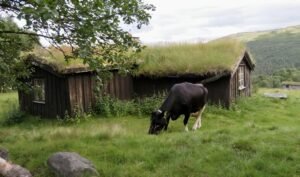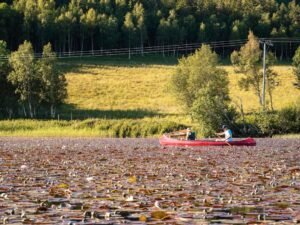

20 Adjectives and Their Opposites in Norwegian | Learn Norwegian | A1-A2 | Grammar
Learning the art of description is key to mastering any language, and Norwegian is no exception. Knowing how to use adjectives properly can greatly improve your conversational skills. This article will go through 20 pairs of adjectives and their opposites. Each pair includes example sentences to help you understand how these adjectives can be used in real-life situations.
Table of Contents
Toggle1. stor (big) – liten (small)
- Bilen er stor. The car is big.
- Hun kjøpte en liten gave til venninnen sin. She bought a small gift for her friend.
2. lang (long) – kort (short)
- Elven er lang. The river is long.
- Møtet var kort. The meeting was short.
3. høy (high/tall) – lav (low/short)
- Han er høy. He is tall.
- Bygningen er lav. The building is low.
4. rask (fast) – treg (slow)
- Hun er rask. She is fast.
- Datamaskinen er treg. The computer is slow.
5. varm (warm) – kald (cold)
- Teen er varm. The tea is warm.
- Kaffen er kald. The coffee is cold.
6. tung (heavy) – lett (light)
- Bagen er tung. The bag is heavy.
- Bladet er lett. The leaf is light.
7. glad (happy) – trist (sad)
- Jeg er glad. I am happy.
- Hun er trist. She is sad.
8. svak (weak) – sterk (strong)
- Hvorfor er krona så svak? Why is the kroner (Norwegian Currency) so weak.
- Han er sterk. He is strong.
9. pen (pretty) – stygg (ugly)
- Hun er pen. She is pretty.
- Bygningen er stygg. The building is ugly.
10. smart (smart) – dum (dumb)
- Han er smart. He is smart.
- Ikke vær så dum! Don’t be so stupid.
11. ny (new) – gammel (old)
- Vi har fått en ny nabo. We have gotten a new neighbor.
- Stolen er gammel. The chair is old.
12. rik (rich) – fattig (Poor)
- Han er rik. He is rich.
- Hun er fattig. She is poor.
13. tynn (thin) – tykk (thick)
- Han er tynn. He is thin.
- Boka er tykk. The book is thick.
14. snill (kind) – slem (mean)
- Hun er snill. She is kind.
- Han er slem. He is mean.
15. tom (empty) – full (full)
- Flasken er tom. The bottle is empty.
- Bussen er full. The bus is full.
16. våt (wet) – tørr (dry)
- Jakka er våt. The jacket is wet.
- Hånden er tørr. The hand is dry.
17. hard (hard) – myk (soft)
- Steinen er hard. The stone is hard.
- Puta er myk. The pillow is soft.
18. ren (clean) – skitten (dirty)
- Skjorta er ren. The shirt is clean.
- Hun følte seg skitten etter å ha jobbet i hagen hele dagen. She felt dirty after working in the garden all day.
19. spennende (exciting) – kjedelig (boring)
- De syntes filmen var spennende. They thought the movie was exciting.
- Forelesningen var kjedelig. The lecture was boring.
20. behagelig (comfortable) – ubehagelig (uncomfortable)
- Stolen er veldig behagelig. The chair is very comfortable.
- Han stilte et ubehagelig spørsmål som ingen visste hvordan de skulle svare på. He asked an uncomfortable question that nobody knew how to answer.
By incorporating these 20 pairs of adjectives and their opposites into your vocabulary, you’ll be well on your way to conversational fluency in Norwegian. Practice is key, so try to use these words whenever you can!
If you want to learn Norwegian, you can register for classes here. If you want to check your Norwegian level for free, you can do that here. We look forward to hearing from you and helping you become fluent in Norwegian!
If you want to learn Norwegian, you can register for classes here. We look forward to hearing from you and helping you become fluent in Norwegian.





